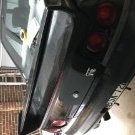Aftermarket Fuel Rails
Announcements
-
Similar Content
-
Latest Posts
-
Thanks, I definitely saw the more expensive options from Crank and driveshaft shop. Thank you for the D-max option. Still hopeful someone has an OEM out of the box option I found that the 300zx NA Left drive shaft is a good match for the Right on the R33. https://www.gsplatinamerica.com/product/ncv53040 Just need to find Left CV for the R33, I cannot find any <=22" axles.
-
I was booted from facebook group, Infiniti Owners Australia.. wow
-
By Dose Pipe Sutututu · Posted
Just run them at 4 bar to give you 1650cc of spray, done.
-







Recommended Posts
Create an account or sign in to comment
You need to be a member in order to leave a comment
Create an account
Sign up for a new account in our community. It's easy!
Register a new accountSign in
Already have an account? Sign in here.
Sign In Now